A novel mechanism for variable phenotypic expressivity in Mendelian diseases uncovered by an AU-rich element (ARE)-creating mutation
- PMID: 28754144
- PMCID: PMC5534118
- DOI: 10.1186/s13059-017-1274-3
A novel mechanism for variable phenotypic expressivity in Mendelian diseases uncovered by an AU-rich element (ARE)-creating mutation
Abstract
Background: Variable expressivity is a well-known phenomenon in which patients with mutations in one gene display varying degrees of clinical severity, potentially displaying only subsets of the clinical manifestations associated with the multisystem disorder linked to the gene. This remains an incompletely understood phenomenon with proposed mechanisms ranging from allele-specific to stochastic.
Results: We report three consanguineous families in which an isolated ocular phenotype is linked to a novel 3' UTR mutation in SLC4A4, a gene known to be mutated in a syndromic form of intellectual disability with renal and ocular involvement. Although SLC4A4 is normally devoid of AU-rich elements (AREs), a 3' UTR motif that mediates post-transcriptional control of a subset of genes, the mutation we describe creates a functional ARE. We observe a marked reduction in the transcript level of SLC4A4 in patient cells. Experimental confirmation of the ARE-creating mutation is shown using a post-transcriptional reporter system that reveals consistent reduction in the mRNA-half life and reporter activity. Moreover, the neo-ARE binds and responds to the zinc finger protein ZFP36/TTP, an ARE-mRNA decay-promoting protein.
Conclusions: This novel mutational mechanism for a Mendelian disease expands the potential mechanisms that underlie variable phenotypic expressivity in humans to also include 3' UTR mutations with tissue-specific pathology.
Keywords: 3′UTR; AU-rich elements; Cornea; Tissue-specific; Variable expressivity.
Conflict of interest statement
Ethics approval and consent to participate
This study was IRB-approved (KFSRHC RAC# 2070023). All subjects have given written informed consent and all experimental methods comply with the Helsinki Declaration.
Competing interests
The authors declare that they have no competing interests.
Publisher's Note
Springer Nature remains neutral with regard to jurisdictional claims in published maps and institutional affiliations.
Figures
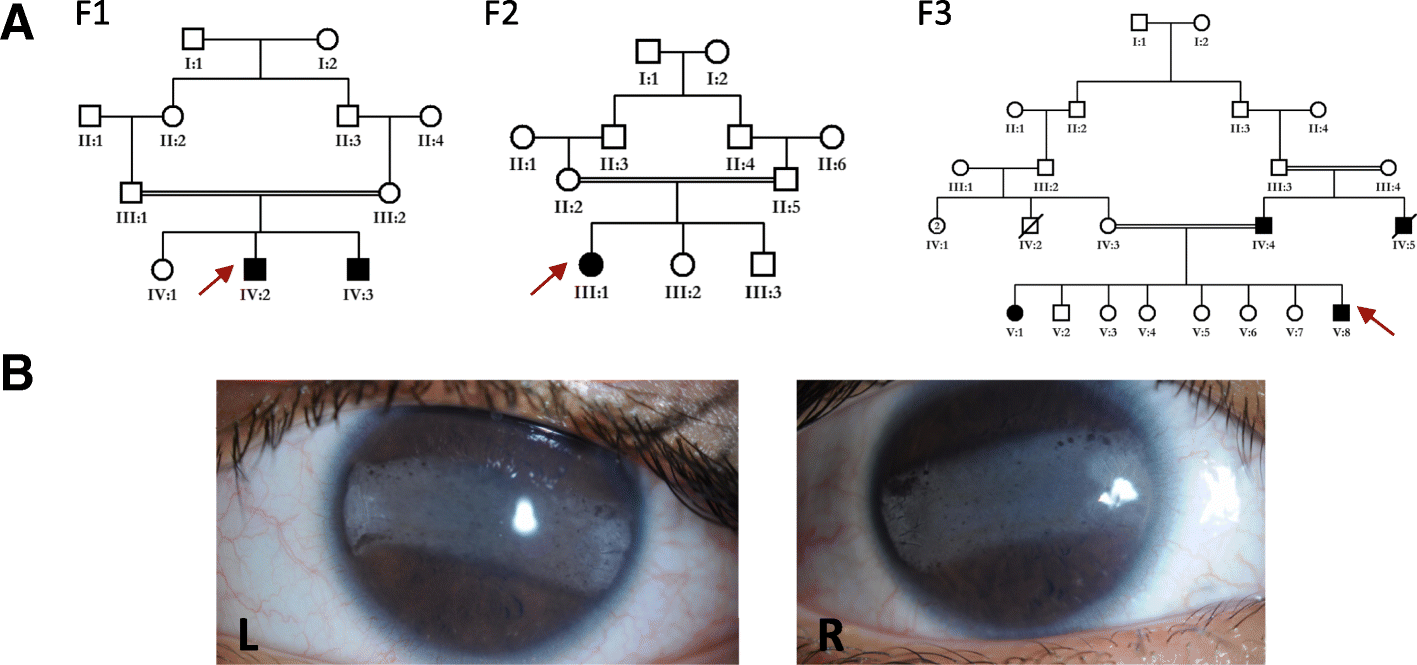
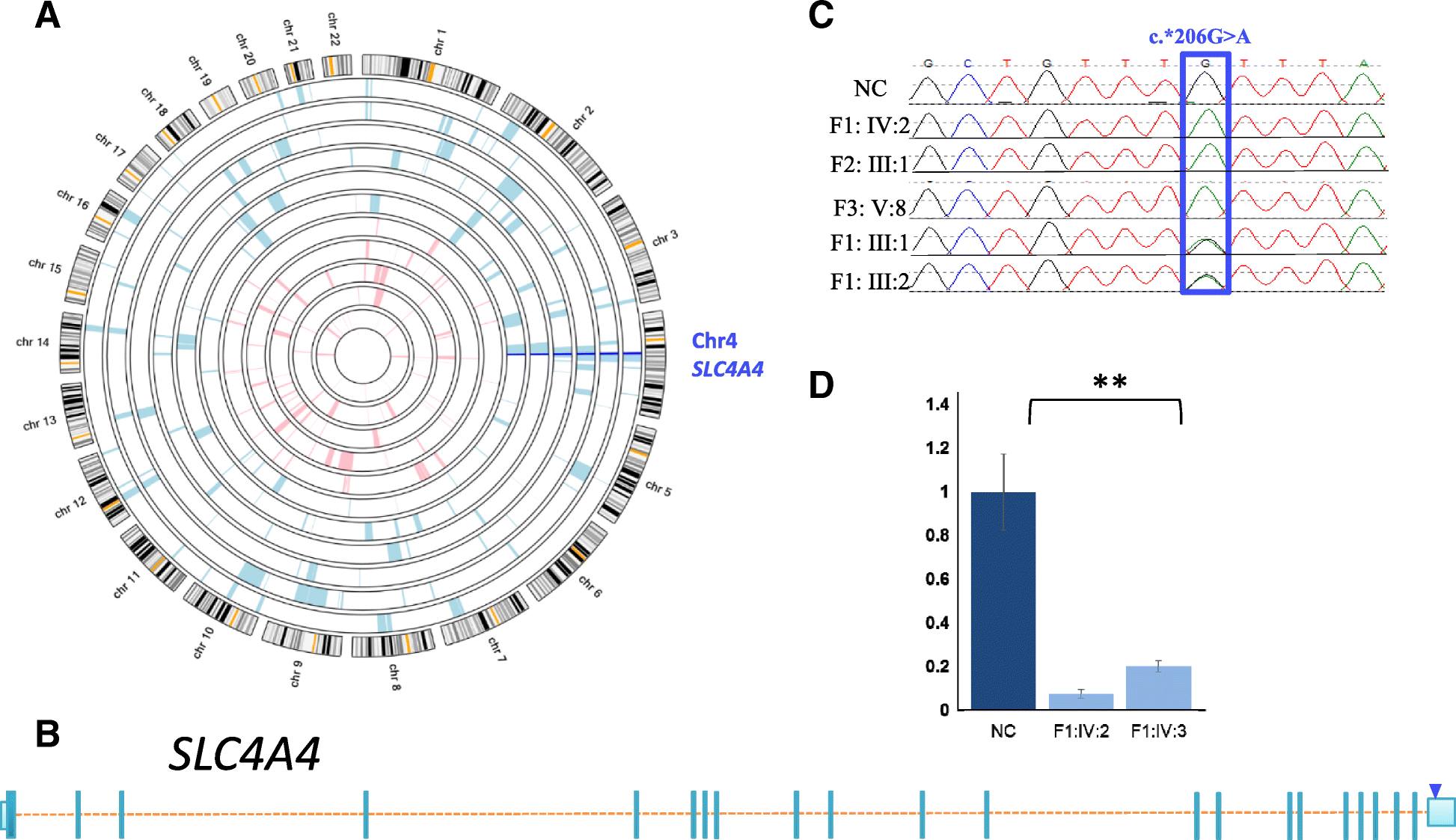
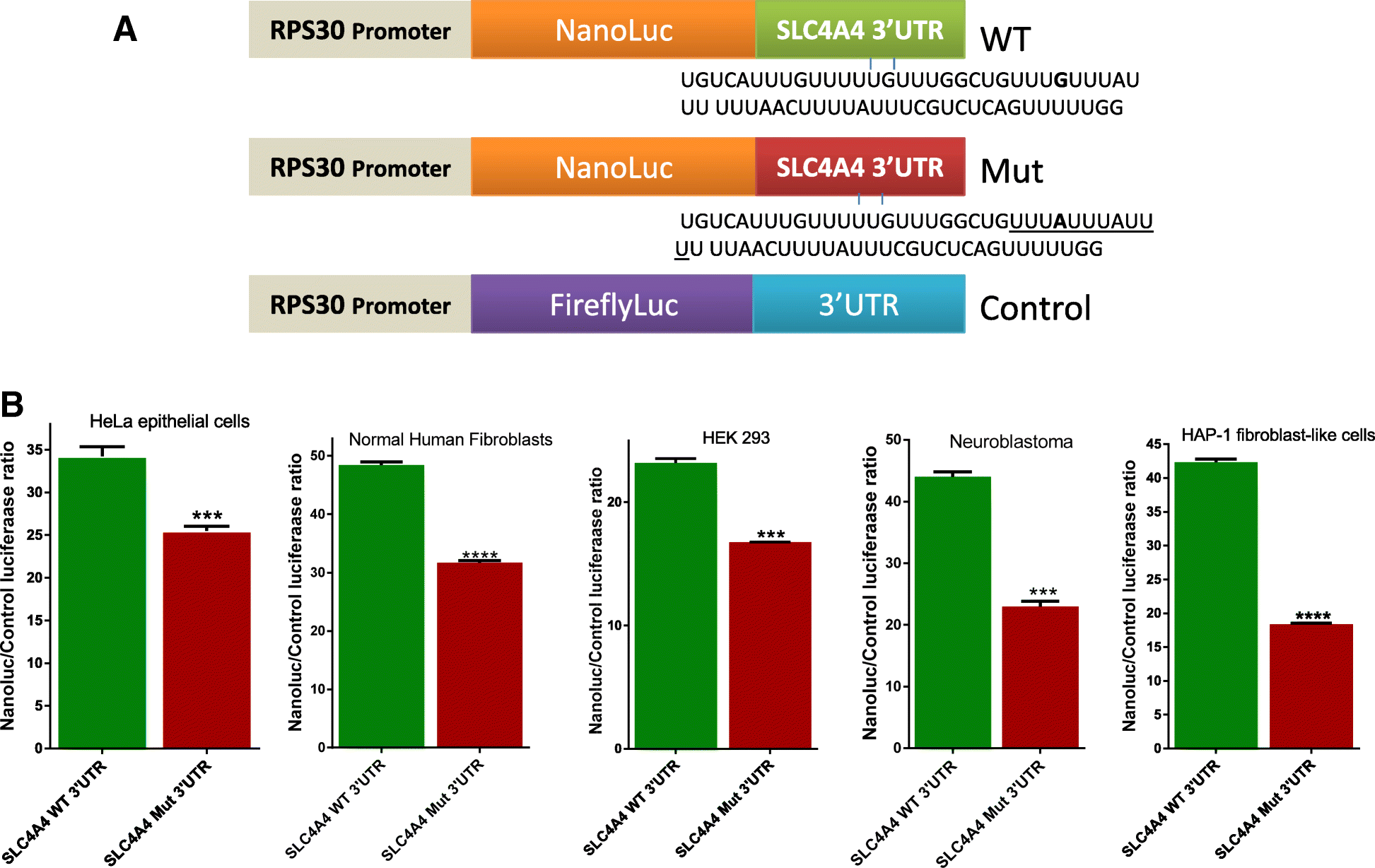
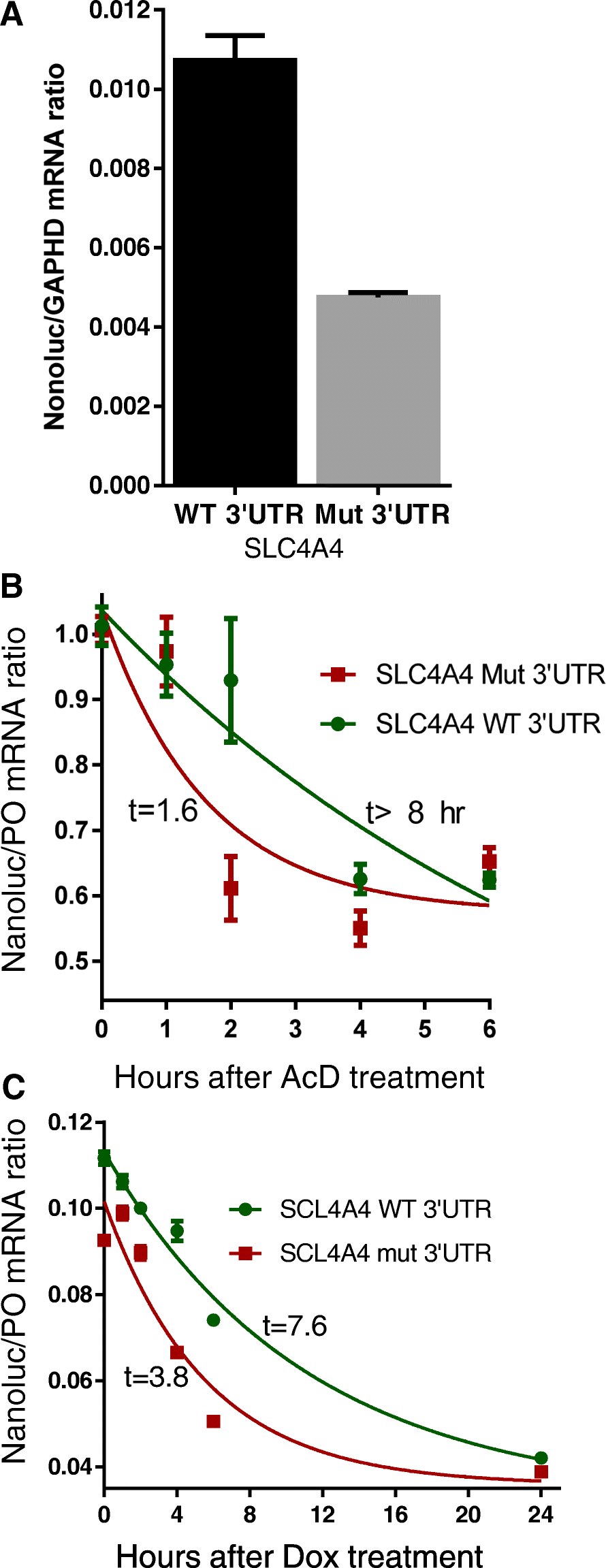
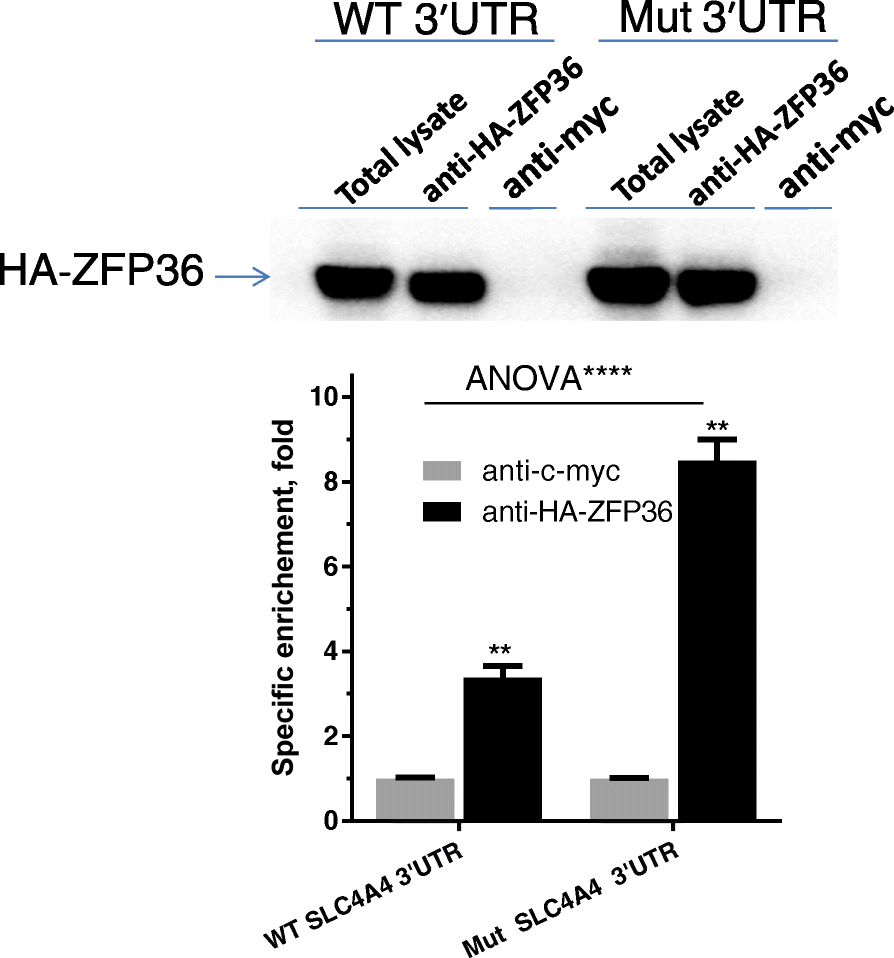

Similar articles
-
Pediatric primary calcific band keratopathy with or without glaucoma from biallelic SLC4A4 mutations.Ophthalmic Genet. 2018 Aug;39(4):425-427. doi: 10.1080/13816810.2018.1459738. Epub 2018 Apr 19. Ophthalmic Genet. 2018. PMID: 29671668
-
The AU-rich element landscape across human transcriptome reveals a large proportion in introns and regulation by ELAVL1/HuR.Biochim Biophys Acta Gene Regul Mech. 2018 Feb;1861(2):167-177. doi: 10.1016/j.bbagrm.2017.12.006. Epub 2018 Feb 2. Biochim Biophys Acta Gene Regul Mech. 2018. PMID: 29413897
-
Oncogenic p95HER2 regulates Na+-HCO3- cotransporter NBCn1 mRNA stability in breast cancer cells via 3'UTR-dependent processes.Biochem J. 2016 Nov 1;473(21):4027-4044. doi: 10.1042/BCJ20160054. Epub 2016 Sep 8. Biochem J. 2016. PMID: 27609814
-
[Mutations in the keratin gene as a cause of Meesman-Wilke corneal dystrophy and autosomal dominant skin cornification disorders].Klin Monbl Augenheilkd. 2000 Jul;217(1):43-51. doi: 10.1055/s-2000-10382. Klin Monbl Augenheilkd. 2000. PMID: 10949816 Review. German.
-
Lessons from studying the AU-rich elements in chronic inflammation and autoimmunity.J Autoimmun. 2019 Nov;104:102334. doi: 10.1016/j.jaut.2019.102334. Epub 2019 Oct 8. J Autoimmun. 2019. PMID: 31604649 Review.
Cited by
-
Zeta-crystallin: a moonlighting player in cancer.Cell Mol Life Sci. 2020 Mar;77(6):965-976. doi: 10.1007/s00018-019-03301-3. Epub 2019 Sep 28. Cell Mol Life Sci. 2020. PMID: 31563996 Free PMC article. Review.
-
Congenital glaucoma and CYP1B1: an old story revisited.Hum Genet. 2019 Sep;138(8-9):1043-1049. doi: 10.1007/s00439-018-1878-z. Epub 2018 Mar 19. Hum Genet. 2019. PMID: 29556725
-
Beyond the exome: utility of long-read whole genome sequencing in exome-negative autosomal recessive diseases.Genome Med. 2023 Dec 14;15(1):114. doi: 10.1186/s13073-023-01270-8. Genome Med. 2023. PMID: 38098057 Free PMC article.
-
Clinical and functional significance of tumor/stromal ATR expression in breast cancer patients.Breast Cancer Res. 2020 May 15;22(1):49. doi: 10.1186/s13058-020-01289-4. Breast Cancer Res. 2020. PMID: 32414408 Free PMC article.
-
Left Ventricular Systolic Dysfunction in NBCe1-B/C-Knockout Mice.Int J Mol Sci. 2024 Sep 5;25(17):9610. doi: 10.3390/ijms25179610. Int J Mol Sci. 2024. PMID: 39273556 Free PMC article.
References
Publication types
MeSH terms
Substances
Supplementary concepts
LinkOut - more resources
Full Text Sources
Other Literature Sources

